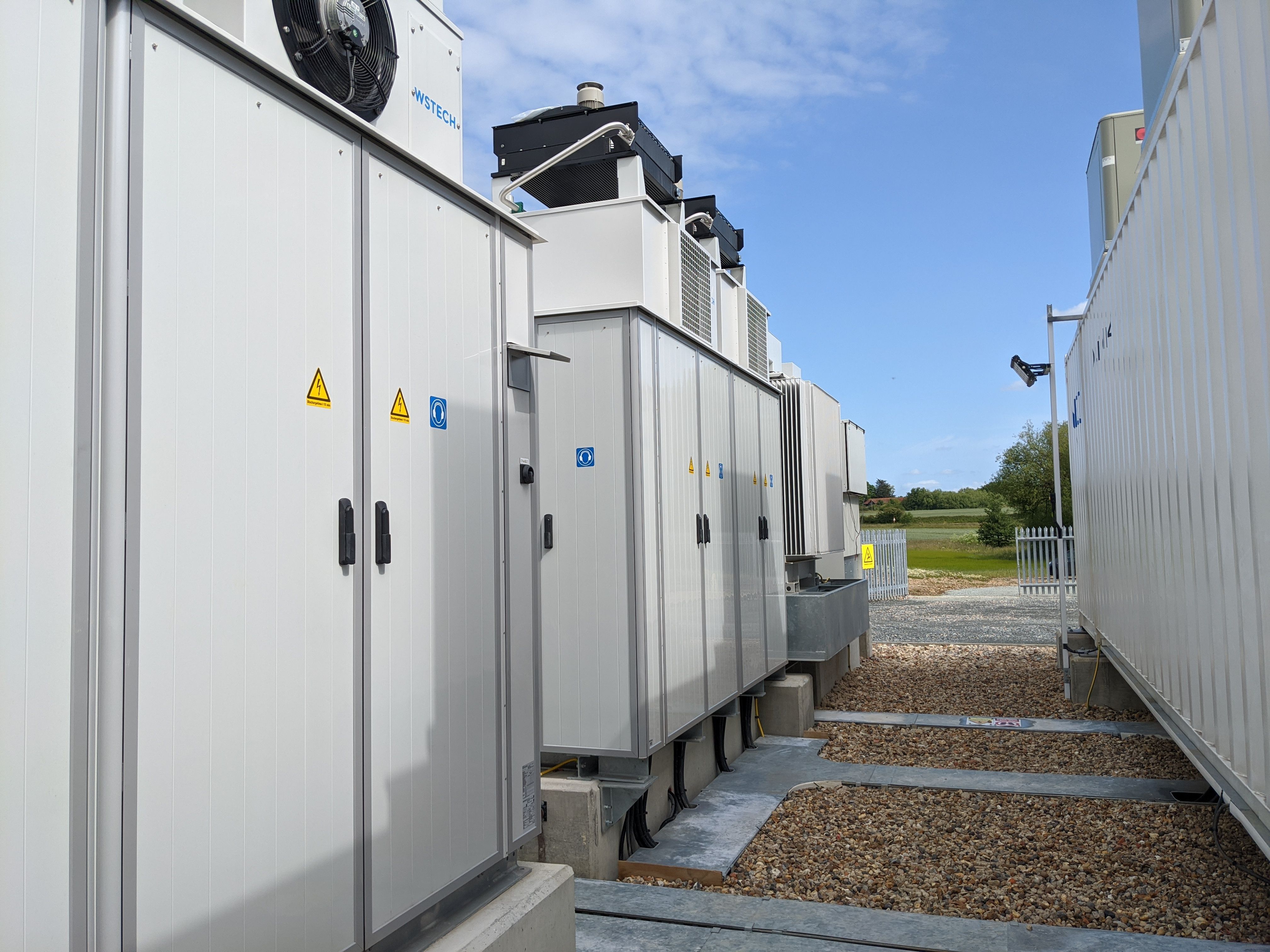
As of the end of September, Gore Street had 16 operational projects, with a total capacity of 291.6MW across four markets. Image: Gore Street.
Despite macroeconomic challenges, Gore Street’s asset value surged 45% over the six months from 31 March 2022, as ancillary service revenues stayed strong.
The battery energy storage fund highlighted the impact of rising short-term inflation, rising interest rates, high foreign exchange (FX) volatility and increasing construction costs on its portfolio.
Thanks to securing competitively priced engineering, procurement, and construction (EPC) contracts, exploiting economies of scale, minimising debt exposure and geographical diversity, the company was able to create natural hedges against FX volatility, Patrick Cox, chair of the Gore Street board, noted.
The fundamental drivers of energy storage remained strong over the six months to 30 September, as the global shift towards renewable generation continued, necessitating assets able to provide system flexibility such as storage.
During the period, Gore Street’s total portfolio increased to 698.2MW from 628.5MW as of 31 March 2022. It had 16 operational projects, with a total capacity of 291.6MW across four markets: Britain, Ireland, Germany and the ERCOT market in Texas. This is up from 12 projects with a capacity of 231.7MW as of the end of March.
The average discount rate applied to the portfolio increased by 1% during the period due to the higher interest rates in the UK, to a weighted average discount of 9.3%.
Gore Street’s net asset value (NAV) grew from £369.6 million in March 2022 to £534.79 million as of September 2022. Its NAV per share increased 3.7% to 111.1 pence, and its NAV total return was 4.65% for the period.
“I am pleased to report another successful period of growth as we continue to deliver on our strategic objectives of providing an attractive level of returns to shareholders despite the changing macro inflationary environment through providing an essential service enabling the renewable transition and enhancing energy security,” said CEO of Gore Street Capital, the investment adviser to the company, Alex O'Cinneide.
“The portfolio grew significantly during the period, with total capacity reaching nearly 900MW in aggregate post-period end, of which 291MW is operational and generating strong cash flow for the company.”
Gore Street’s British assets made up the bulk of the company’s revenue during the period, benefitting from the significant volatility in the market. The revenue was predominantly derived from Dynamic Containment and Firm Frequency Response, as they offered the best returns with the capacity market adding to the revenue stack.
| Revenue Stream | (£million) | % within the grid | % of overall portfolio | Average hourly revenue per MW | Average hourly revenue per MWh | MW | MWh |
|---|---|---|---|---|---|---|---|
| GB | |||||||
| Ancillary services | £8.79 | 91.90% | |||||
| Capacity Market | £0.59 | 6.10% | |||||
| Wholesale Trading | £0.19 | 2.00% | |||||
| GB - Total | £9.57 | 100% | 47.40% | £19.92 | £21.63 | 109.7 | 101 |
| Ireland | |||||||
| DS3 Uncapped/Capped | £5.94 | 99.20% | |||||
| Wholesale Trading | £0.05 | 0.80% | |||||
| Ireland - Total | £5.99 | 100% | 29.70% | £10.52 | £18.84 | 130 | 72.6 |
These ancillary services are expected to continue to drive the bulk of revenue, along with Dynamic Moderation and Dynamic Regulation both seeing increased levels of activity going forwards.
Merchant markets like the Balancing Mechanism and wholesale trading can also offer additional revenue potential, the fund noted.
For its British assets, Gore Street anticipated a blended curve of revenue for ancillary services, trading, Capacity Market revenue, and other revenue sources like voltage revenue and TNUoS benefit, over the coming years to be:
| Blended Curve of Ancillary Services & Trading (£/MW/h) | Dec-22 | Dec-23 | Dec-24 | Dec-25 | Dec-30 | Dec-35 | Dec-40 |
|---|---|---|---|---|---|---|---|
| GB (real 2021) | 17.07 | 16.27 | 11.84 | 9.41 | 7.04 | 7.41 | 7.87 |
Further expansion of Gore Street’s portfolio will be supported by the company raising £150 million through an upscaled and oversubscribed share issue in April 2022. Its issued share capital has therefore increased to 481.4 million, up from 345.0 million as of 31 March 2022.
“The demand seen highlights both the institutional and retail interest for access to companies which have a major role in enabling the transition towards a net-zero economy, and the increasingly large and attractive number of opportunities in our pipeline, totalling 1.5GW,” added O'Cinneide.
The opportunities being assessed include a particular focus on geographical diversity, to try to further protect the company from the impact of macroeconomic trends.
In particular it is looking at the potential of North America, where electricity grids of individual states, in many ways, act as islands creating specific opportunities, as well as policy being favourable, especially since the introduction of the Inflation Reduction Act.
Europe is another key area of focus, as countries look to reach decarbonisation targets, transitioning to intermittent renewable technologies.
In Britain, Gore Street is continuing to expand its portfolio as well, including the acquisition of a 200MW battery storage project in Lancashire in October, following the end of the reporting period.
“Post-period end, we acquired the company’s largest construction-ready asset to date, the 200MW transmission-connected project from Kona Energy, further strengthening the company’s leadership position in the GB market. We are highly encouraged by an asset of this scale being connected to the main transmission network, which we expect will provide additional revenue streams. I thank shareholders for their continued support and look forward to updating investors on our progress,” finished O'Cinneide.
The strong financial results follow Gore Street seeing its net income increase by 191% over the year to 31 March 2022, whilst the EBITDA of its operational portfolio surged 704%.
